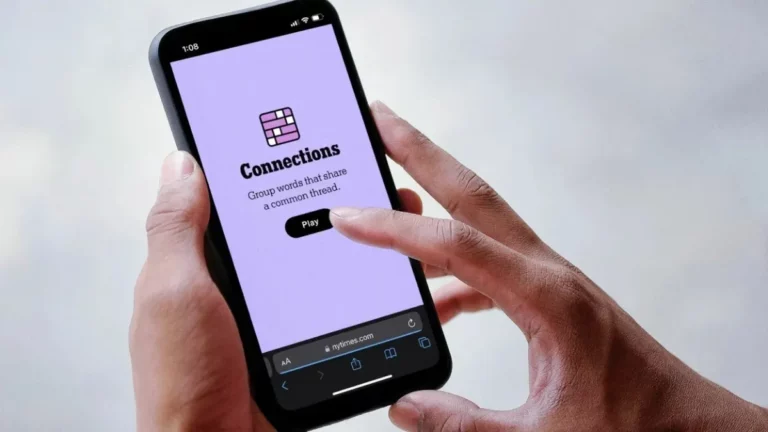Mastering NYT Connections Hints: Tips to Enhance Your Puzzle Skills

Understanding NYT Connections: An Overview
The NYT Connections puzzle is an engaging word-based game that challenges players to make connections between seemingly unrelated words. Structured in a grid format, players are given a set number of words—typically 16—that they must categorize into groups of four based on shared themes or common characteristics. Participation in this puzzle not only tests vocabulary knowledge but also encourages critical thinking and pattern recognition.
Each game consists of a series of clues, which may vary in difficulty. The clues can range from synonyms and antonyms to more intricate references, such as cultural elements or historical events. This diverse array of clues requires players to think broadly and creatively, examining the relationships among words to establish meaningful connections. Successfully categorizing words not only fulfills the objective of the puzzle but also enhances cognitive flexibility, as players must rapidly adapt their thought processes.
The aim of the NYT Connections puzzle extends beyond merely identifying categorical links. It encourages players to engage in a mental exercise that sharpens their problem-solving abilities. Additionally, the time constraints often associated with completing these puzzles add a level of excitement and urgency, elevating the overall experience. Players often find themselves developing strategies to recognize patterns more efficiently, which can be invaluable in mastering the game. Due to the nature of the puzzle, using hints strategically can significantly enhance a player’s ability to make connections and improve solving skills.
Understanding the structural dynamics and objectives of the NYT Connections puzzle is fundamental for anyone looking to enhance their puzzle-solving expertise. This foundational knowledge sets the stage for exploring various methods and tips that can elevate one’s ability to navigate the game’s intricate web of words.
The Importance of Hints in NYT Connections
Hints play a crucial role in enhancing one’s gameplay experience in NYT Connections, functioning as valuable tools for both novice and experienced players. The essence of the game revolves around identifying patterns and making connections between words, which can sometimes be a daunting task, particularly when the relationships among terms become complex. In such scenarios, hints serve as guiding lights, nudging players towards the right associations without outright revealing the answer. This ability to provide subtle direction allows players to maintain an engaging challenge while facilitating a deeper cognitive reflection on word relationships.
Furthermore, hints can significantly improve players’ problem-solving strategies. When feeling stymied or faced with an especially intricate puzzle, the judicious use of hints can help learners break down the components of a problem. This approach encourages players to think critically about the connections they are attempting to make and inspires them to explore alternative perspectives. By incorporating hints into their problem-solving toolkit, players not only uncover the correct answers but also cultivate their cognitive abilities, refining their capacity to spot patterns and make connections with greater ease.
However, a balance must be struck between utilizing hints and fostering independent solving techniques. While hints are undeniably beneficial, excessive reliance on them can inhibit skill development and critical thinking. Players must strive to approach puzzles without over-dependence on hints, thus encouraging resilient problem-solving skills. This balance ensures that while hints provide necessary support, they do not overshadow the rich learning experience that comes from tackling puzzles independently. In a game characterized by evolving challenges and new word associations, mastering the art of incorporating hints will undoubtedly enhance one’s performance in NYT Connections.

Effective Strategies for Using NYT Connections Hints
Utilizing hints in NYT Connections puzzles effectively is a skill that can significantly enhance a player’s puzzle-solving abilities. One vital strategy is to analyze hints within the context of the broader puzzle layout. This involves assessing how the hint relates to the existing categories or clues already identified. By understanding the thematic connections suggested by the hint, players can more accurately determine its relevance, leading to more efficient solutions.
Prioritizing which hints to follow is another essential tactic. Not all hints carry the same weight; some may directly link to a crucial category while others might provide less immediate assistance. Players should consider the hints most closely related to the categories they are currently striving to complete. This strategic approach allows players to harness the hints that can yield the most significant impact on their solving efforts.
Incorporating hints into an overall solving methodology is equally important. Players should treat hints as part of their strategic toolkit rather than a crutch. This mindset encourages active engagement with the puzzle rather than passive reliance on hints. Developing a habit of cross-referencing hints with the other elements of the puzzle can foster a more analytical approach to solving.
Additionally, practicing hint usage in a structured manner can be beneficial. Players may set aside time to work on puzzles with a focus on using hints purposefully. For instance, one could solve a series of puzzles while consciously using one hint per puzzle. This practice helps to build confidence in interpreting clues without fostering an overreliance on them. Over time, players will develop stronger analytical skills that enhance their overall puzzle-solving techniques while enjoying the rewarding challenge that NYT Connections offers.
Common Mistakes to Avoid When Using Hints
When engaging with puzzles in NYT Connections, players often turn to hints to gain an edge. However, the misuse of hints can lead to several common mistakes that may hinder overall performance. One significant pitfall is the misinterpretation of hints. Players may inadvertently take hints at face value, failing to think critically about the clues provided. This can lead to incorrect assumptions about the puzzle’s structure or desired answers, thereby stalling progress rather than facilitating it.
Another prevalent issue is the over-reliance on hints. While hints serve as a valuable tool, frequent dependence on them can inhibit a player’s problem-solving abilities. Players who lean too heavily on hints may neglect to develop their analytical skills and intuitive reasoning. It is essential to strike a balance; using hints should be a strategic choice, not a crutch. Encouraging oneself to solve puzzles independently can enhance long-term puzzle-solving abilities.
Additionally, some players fall into the trap of skipping steps in the solving process. When hints provide a seemingly clear direction, players might bypass crucial reasoning steps, such as identifying the connections between words or phrases. This can lead to incomplete understanding and may result in difficulty when encountering similar puzzles in the future. It is vital to maintain a structured approach, ensuring all facets of the puzzle are considered and understood before finalizing answers.
By recognizing these common mistakes—misinterpreting hints, over-relying on them, and neglecting essential steps—players can learn to use hints judiciously. Developing a healthy habit around hint usage will not only improve performance in NYT Connections but also bolster confidence in puzzle-solving capabilities overall.